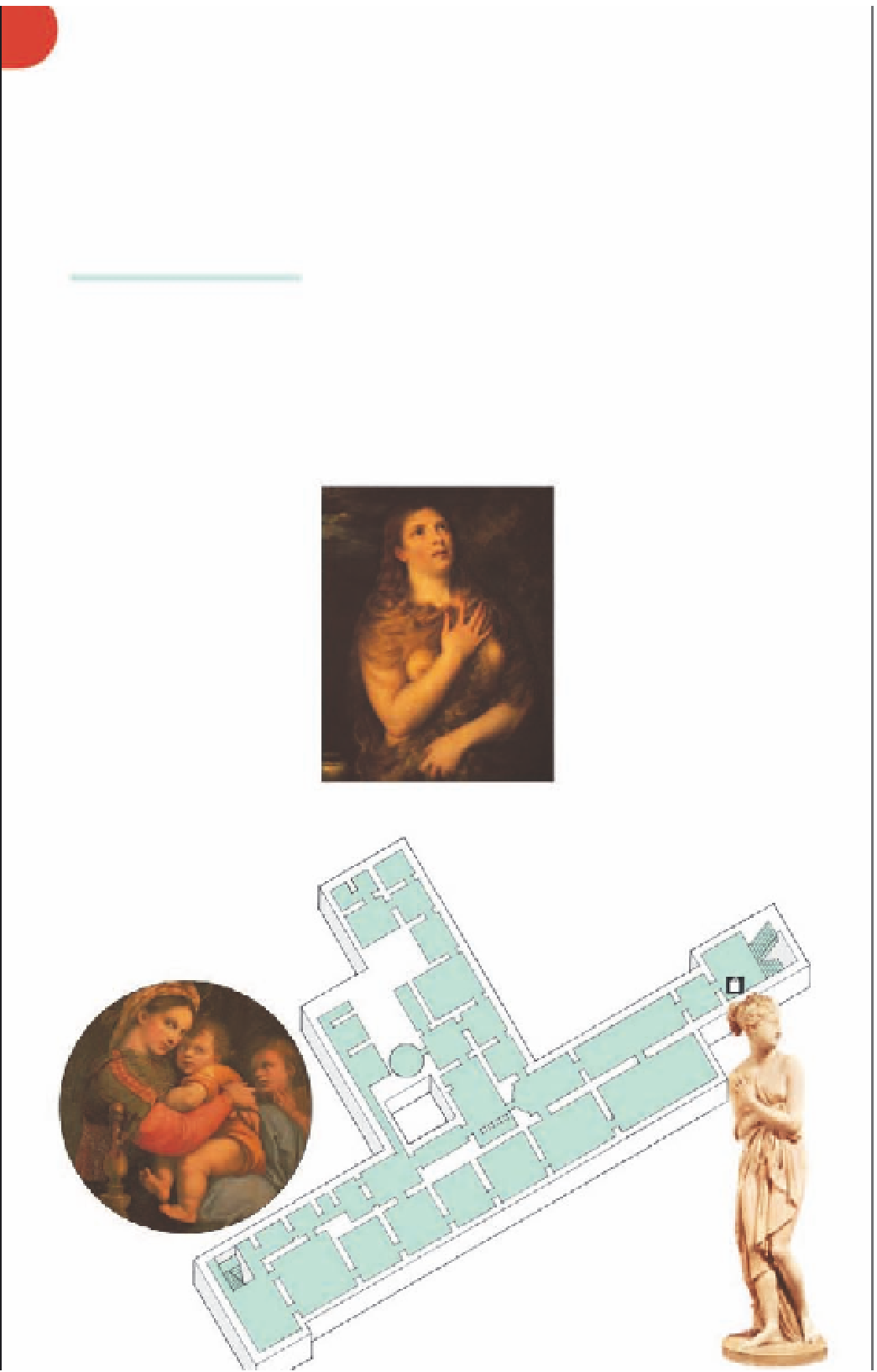Travel Reference
In-Depth Information
Exploring the Palazzo Pitti
Although some of the Medici
collection has been transferred
to the Uffizi over the years,
the Palatine Gallery is still
packed with masterpieces by
artists such as Botticelli,
Perugino, Titian, Andrea del
Sarto, Pontormo, Tintoretto,
Veronese, Caravaggio, Rubens
and Van Dyck, among others.
There are approximately 1,000
paintings here, providing a
vast survey of 16th- and 17th-
century European painting.
The Sala di Venere (Venus)
is dominated by the statue of
Venus Italica
by Antonio
Canova, commissioned by
Napoleon in 1810 as a
replacement for
The Medici
Venus
in the Uffizi Gallery,
which was to be taken to
Paris. Napoleon was not
normally so generous, as his
agents were renowned for
stealing a large number of
fine works of art from Italy
during the Napoleonic Wars.
Several of Titian's works in
the following rooms were
commissioned by the Duke
of Urbino.
La Bella
(1536) is
a portrait of a lovely but
unknown woman, whom he
also used as a model in other
paintings. His portrait,
Mary
Magdalene
, in the Sala di
Apollo, was painted between
1530-35 in an overtly sensual
manner, bathed in soft light.
Some of Raphael's best High
Renaissance work is in the
Palatine, including
Portrait of
a Woman
(c.1516) and
The Palatine gallery was realized by the Medici family
and the Habsburg-Lorraine duchies in the 1600s and
1700s. The frescoed halls were hung with works from
their private collection and the gallery was opened to the
public in 1833. Other attractions include the royal apart-
ments, the Medici collection of jewellery and treasures,
the gallery of modern art and an exhibition of Italian
clothing from the 18th, 19th and 20th centuries.
The other rooms in the gallery
were private apartments and
range from the opulence of
the formal drawing rooms to
the severity of Napoleon's bath-
room (Room 27)
(see p55)
, in a
suite of rooms designed by
Giuseppe Cacialli for the
emperor in 1813 following his
conquest of northern Italy.
THE PALATINE GALLERY
The gallery contains a superb
collection of works dating
from the Renaissance and
Baroque. They are hung as
the 17th- and 18th-century
Grand Dukes wished, placed
purely for their effect, regard-
less of subject or chronology.
The decoration of the rooms
in the gallery reflects the
tastes and preoccupations of
the time. Rooms 4 to 8 are
painted with Baroque ceiling
frescoes begun by Pietro da
Cortona between 1641-7, and
finished by his pupil Ciro Ferri
in 1666. They allegorize the
education of a prince by the
gods. In Room 1, the prince
is torn from the love of Venus
by Minerva (knowledge) and
in the following rooms he is
taught science from Apollo,
war from Mars and leadership
from Jupiter. Finally Saturn
welcomes him to Mount
Olympus, home of the gods
in Roman mythology.
Mary Magdalene
by Titian (c.1535)
30
32
33
29
THE PALATINE GALLERY
The gallery is on the first floor
of the Palazzo Pitti.
31
Stairs to
ground floor
28
26
1
27
18
23
17
2
24
22
25
16
3
21
20
4
15
19
5
14
6
13
Sala di
Venere
12
7
11
10
8
Sala di Apollo
Madonna of the
Chair
by Raphael
(c.1516)
Sala di Marte
9
Sala di Giove
Sala di Saturno
Venus Italica
by Antonio
Canova (1810)
East stairs















































